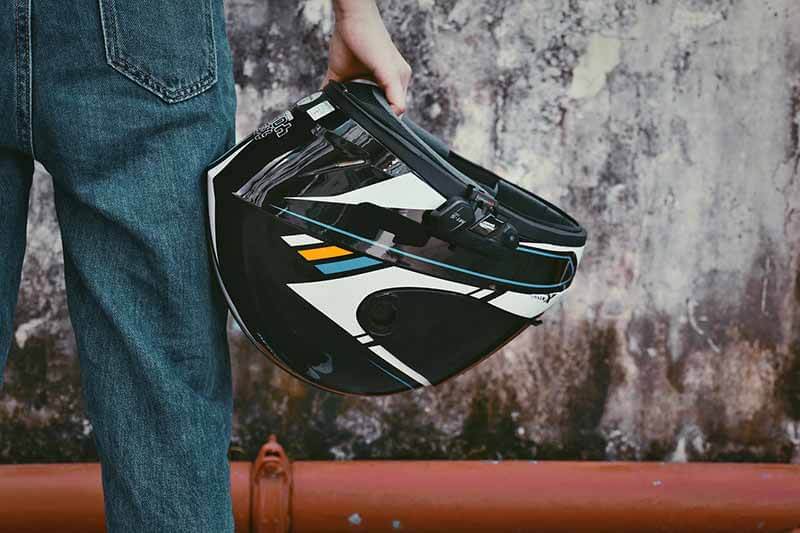I'm a bit of a helmet collector, so have owned many from different brands like Schuberth, Dainese, Shoei, Arai, Nexx, LS2, Klim, Shark, Zox
Some of my personal observations:
- Most of the money you spend on the helmet goes into non-safety related features, like quality of materials that touch your skin, the ease of removal of pads, visors and peaks for cleaning or replacement, venting, weight, wind management and noise management. And course, graphics vs solid colours, with race replica lids commanding the most premium (Looking at you, Rossi-heads)
- Most helmet companies contract out their manufacturing to China. Only a few manufacture from the country where they are headquartered. Joe Rocket is a Canadian company and AGV is from Italy, but their helmets are actually made in China. That greatly lowers their costs which is reflected in the retail price. Others like Schuberth, Arai and Shoei manufacture from the country where they are headquartered like Germany and Japan, which have higher labour costs hence higher retail cost. But does higher labour cost equal better safety? iPhones are considered a premium product, but as most people know, they're made in China, not in the US, where Apple is headquartered. How much of what you are paying is just for good marketing?
- Any safety rating above DOT compliance (which is self-claiming, not tested/certified) will command a premium, but how much does it actually cost a manufacturer to submit a helmet for ECE/Snell/FIM testing and for a well-known helmet company, does it justify the price increase across tens of thousands of helmets sold? RyanF9 had a good point about economies of scale. Smaller companies make and sell fewer helmets, so it might not make financial sense to pay for tests and certification if they're only going to sell a few thousand a year, but if they actually did spend the money, would their helmets pass safety cert anyway? Easy to say, "well it feels cheap", but that may just be the materials touching your skin like cheek pads and liners (see first point above) and these cheaper-feeling helmets *may* still be as safe as more expensive lids that feel better and more comfortable.
- "Premium" helmet manufacturers do get it wrong sometimes. Schuberth is a well regarded company, but when they released their C4 helmet, it was vastly inferior to their old C3/C3 Pro in terms of comfort and safety. They fixed it in their newest C5 line, but it should serve as a warning to buyers who base their purchase on name recognition that quality is still model dependent and not brand dependent. The post directly above this one may be one such example of this.
Some of my personal observations:
- Most of the money you spend on the helmet goes into non-safety related features, like quality of materials that touch your skin, the ease of removal of pads, visors and peaks for cleaning or replacement, venting, weight, wind management and noise management. And course, graphics vs solid colours, with race replica lids commanding the most premium (Looking at you, Rossi-heads)
- Most helmet companies contract out their manufacturing to China. Only a few manufacture from the country where they are headquartered. Joe Rocket is a Canadian company and AGV is from Italy, but their helmets are actually made in China. That greatly lowers their costs which is reflected in the retail price. Others like Schuberth, Arai and Shoei manufacture from the country where they are headquartered like Germany and Japan, which have higher labour costs hence higher retail cost. But does higher labour cost equal better safety? iPhones are considered a premium product, but as most people know, they're made in China, not in the US, where Apple is headquartered. How much of what you are paying is just for good marketing?
- Any safety rating above DOT compliance (which is self-claiming, not tested/certified) will command a premium, but how much does it actually cost a manufacturer to submit a helmet for ECE/Snell/FIM testing and for a well-known helmet company, does it justify the price increase across tens of thousands of helmets sold? RyanF9 had a good point about economies of scale. Smaller companies make and sell fewer helmets, so it might not make financial sense to pay for tests and certification if they're only going to sell a few thousand a year, but if they actually did spend the money, would their helmets pass safety cert anyway? Easy to say, "well it feels cheap", but that may just be the materials touching your skin like cheek pads and liners (see first point above) and these cheaper-feeling helmets *may* still be as safe as more expensive lids that feel better and more comfortable.
- "Premium" helmet manufacturers do get it wrong sometimes. Schuberth is a well regarded company, but when they released their C4 helmet, it was vastly inferior to their old C3/C3 Pro in terms of comfort and safety. They fixed it in their newest C5 line, but it should serve as a warning to buyers who base their purchase on name recognition that quality is still model dependent and not brand dependent. The post directly above this one may be one such example of this.

















